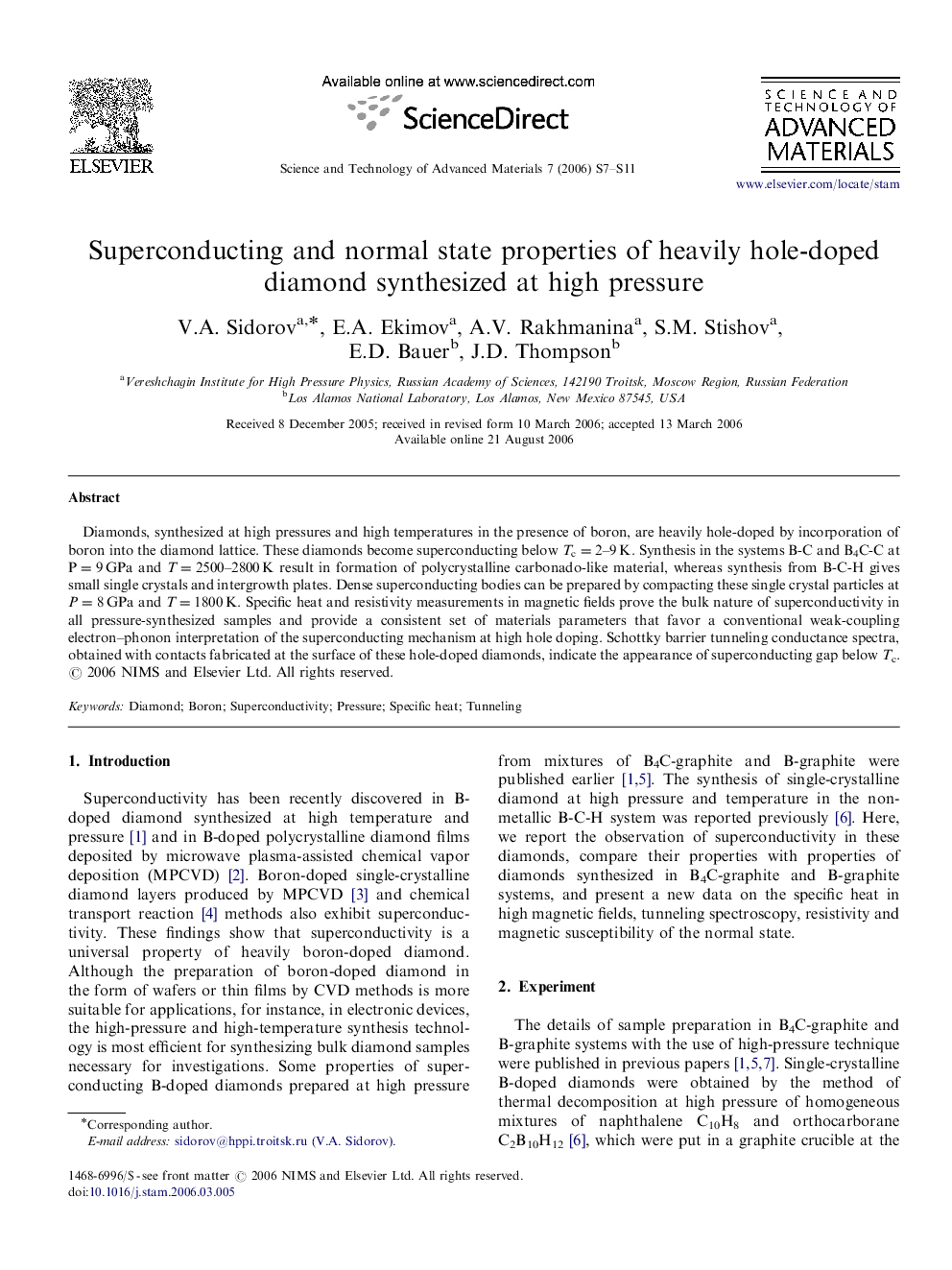| Article ID | Journal | Published Year | Pages | File Type |
|---|---|---|---|---|
| 1590930 | Science and Technology of Advanced Materials | 2006 | 5 Pages |
Abstract
Diamonds, synthesized at high pressures and high temperatures in the presence of boron, are heavily hole-doped by incorporation of boron into the diamond lattice. These diamonds become superconducting below Tc=2-9Â K. Synthesis in the systems B-C and B4C-C at P=9Â GPa and T=2500-2800Â K result in formation of polycrystalline carbonado-like material, whereas synthesis from B-C-H gives small single crystals and intergrowth plates. Dense superconducting bodies can be prepared by compacting these single crystal particles at P=8Â GPa and T=1800Â K. Specific heat and resistivity measurements in magnetic fields prove the bulk nature of superconductivity in all pressure-synthesized samples and provide a consistent set of materials parameters that favor a conventional weak-coupling electron-phonon interpretation of the superconducting mechanism at high hole doping. Schottky barrier tunneling conductance spectra, obtained with contacts fabricated at the surface of these hole-doped diamonds, indicate the appearance of superconducting gap below Tc.
Related Topics
Physical Sciences and Engineering
Materials Science
Materials Science (General)
Authors
V.A. Sidorov, E.A. Ekimov, A.V. Rakhmanina, S.M. Stishov, E.D. Bauer, J.D. Thompson,
